The Tale of the Unknown Whale
If you sei something, you might just see something
Firstly, we want to offer a warm welcome to our new subscribers, especially those who came from the Anchor Points newsletter, penned by Dana’s sister, Monica Haim Kallenberg, for Wild Alaskan Company. For those unaware, it's a beautiful weekly dispatch that is not just about salmon or Alaska, but about family, love, and life. Check out our Q&A here! We’re so glad to have you here and sincerely hope you enjoy our newsletter.
Speaking of Dana’s family, the whole gang flew up to Alaska to celebrate Monica’s 50th this summer. We had a pretty jam-packed itinerary while the family was here. After learning about what a local fishing guide called “a whale superhighway” in Resurrection Bay and the Kenai Fjords National Park, we figured it would be special to get the whole family on a wildlife expedition to look for rare marine mammals. In particular, we aimed to spot a fin whale (Balaenoptera physalus) or a sei whale (Balaenoptera borealis), both of which are enormous baleen whales, the 2nd and 3rd largest species on the planet, respectively, after the more well-known blue whale.
On a sparkling, sunny August afternoon, we boarded a large catamaran, the Kenai Fjords 360, on what was billed a “Major Marine Tour.” The goal of the trip, for just about everyone on board, was to see a whale. Typically, on these kinds of trips, you see humpback or orca whales, which delight the crowd and make this one of the most popular excursions for tourists visiting Alaska.
But we were looking for something different.
And so, as we were boarding, I asked one of the crew members, “I’m wondering if you think there’s a chance we will see a fin or sei whale?” I got a funny look and she said, “Say what?” I didn't know if she was kidding, so I repeated, “Are sei whale or fin whale seen around here?” and then she said, “Say it again.” Now I realized she was pulling my leg. Finally, she smiled and gave me some actual information. “We seldom see those species. I’ve been working here for two summers and have never seen one. Sorry, but there are very low odds of seeing one of those whales today. Deflated but appreciative of her “dad humor”, I reciprocated, yelling sarcastically, “Say it ain’t so” as I boarded the vessel with my good camera just in case.
Both of these remarkable species were nearly driven to extinction during the 20th century after being hunted for their meat and oil. Today, the primary threats include vessel strikes, entanglement in fishing lines, ocean noise, and climate change. They are considered endangered under the US Endangered Species Act. The sei whale, named for the word “pollock” in Norwegian since they often appear together, is also designated as depleted under the Marine Mammal Protection Act. The total population of sei whales in all U.S. waters is unknown. It’s estimated to be around 50,000 globally. Fin whales are named after the ridge line coming down from their dorsal fin. They are doing a bit better, with an estimated 100,000 individuals swimming in the seas.
We were just happy to be out on the water with our extended family, staring at these epic, ancient fjords and taking in the sunshine. As we entered Resurrection Bay, we saw a couple of otters frolicking on their backs, basking in the sunlight. They were nearly hunted to extinction for their incredible fur, but thanks to international efforts, they have received protection, have rebounded, and are no longer endangered. We took this duo as a positive omen.
All of a sudden, the ship came to a halt, and the captain came on the loudspeaker. “We’ve got a sighting of a fin at 11’ ’’clock. “We’re hoping it will come up again. Look towards the bow of the boat.” Suddenly, everyone on board was clamoring for a spot to see whatever it was the captain had spotted. After a few minutes of scanning the ocean’s surface for any signs of movement, a small dorsal fin came up about 500 yards away. I snapped furiously with my long lens, hoping to get a photo. I missed it. We waited another few minutes. This time, the whale came up even farther away from us. “There it is!” I heard someone scream. And everyone ran from the bow to the stern of the boat. The captain turned us around, and we tried to get another view. We waited again. It came up again, this time a little bit closer, but still quite far away. This time, my lens and eyeballs were facing the right direction. The second I saw some movement I snapped as many photos as i could. It was literally a split second before it came to the surface. I was pretty sure I had missed it. It turned out that I got one image of the whale.
Eventually, the captain came on the loudspeaker and said, “This is either a juvenile fin or a fully grown sei whale.” They were not really sure which. Either way, we're going to let him go on his way and go find some other whales.” I was both elated and frustrated. I couldn't believe we had seen one of these incredibly rare species, despite the crew members ’ pessimistic outlook. How is it that the captain didn’t know which one it was? And why can’t we follow it for a little bit longer?
I went down to the bridge and asked the captain which whale he thought it was. He said we were too far away to know. I showed him my photo, and he was still unsure. He said we were just too far to know for sure. He said that 999 out of 1000 times, they can identify the whale, but this is one of those rare cases where they just can’t. Of course, this whale is only unknown to us humans who have decided to construct a taxonomy of every creature on earth. The whale is likely not having an identity crisis.
We kept going on the designated route. We saw the Bear, Ailik, and Holgate glaciers from a distance. They were breathtaking.
And then, on the way back, we visited a colony of Steller Sea Lions (Eumetopias jubatus) where we got to observe them for a while. The western population of Steller sea lions, found mainly in the Gulf of Alaska, Bering Sea, and Russia, is listed as endangered under the US Endangered Species Act due to a rapid decline of 70-80% since the 1970s. The primary theory relates to a decline in the fatty fish they prefer to eat, such as herring, resulting from climate change; however, no one is yet sure why so many of them have died off. Fortunately, their numbers have stabilized since the early 2000s. Their barking and jockeying for position on the rocks was a thrill to see.
We continued searching for more whales, but unfortunately, we did not see any more—just a brief sighting of an unidentified whale. Maybe you can help ID it? ChatGPT was useless.
If not, it’s ok.
There’s a lesson in here somewhere. Perhaps it's that, in the age of artificial intelligence, where I can take a photo of a flower and get an instant ID of it, it’s kind of nice to have a bit of mystery still. Or maybe it’s just to teach us that there will always be unknowable things. I can live with that. The best part, after seeing the whale, of course, was when I bumped into the crew member again in the galley. She probably thought I was some male witch. She said, “You manifested it! I can't believe you literally said the Fin and Sei whales, and that’s what we saw! We never see those whales. You must be psychic.”
I smiled and said, “I must be.”
To make it slightly less creepy, I filled her in about Earth Parade and how we’re looking for endangered species, and that’s why I asked about those whales, but she still probably thought I had a 3rd eye.
Sometimes you have to say something, and the universe conspires to make it happen. This is the lesson of the Sei (or fin whale) for me. It's the inverse of that old moniker on the NYC subway to help prevent crime and theft, which goes, If you see something, say something.’
Our new motto here at Earth Parade is, “If you sei something, you might just see something.” Say the creature's name enough, and there’s a better chance it will reveal itself to you. There probably aren't any double-blind scientific studies to support this claim, but I do believe it works. Words and intent have power individually. And when you put them together, as in prayer, maybe, just maybe, they can alter reality. Or more likely, they alter your perception and awareness to notice reality differently. Try it and let us know how it goes.
As for our creature catalog, which is our ongoing tally of threatened species we’re celebrating, we have a bit of an ethical dilemma. We are definitely adding the Stellar sea lions, but in terms of which whale to add, what should we do? After a long deliberation, we decided we’re going to add both whales, even though we only saw one of them. We reason that it would be unfair to select just one, since it could have been the other one. And in a world where humpbacks and orcas get all the glory, we figured it can't hurt to celebrate BOTH of these two lesser-known whales. So that’s what we’re going to do.
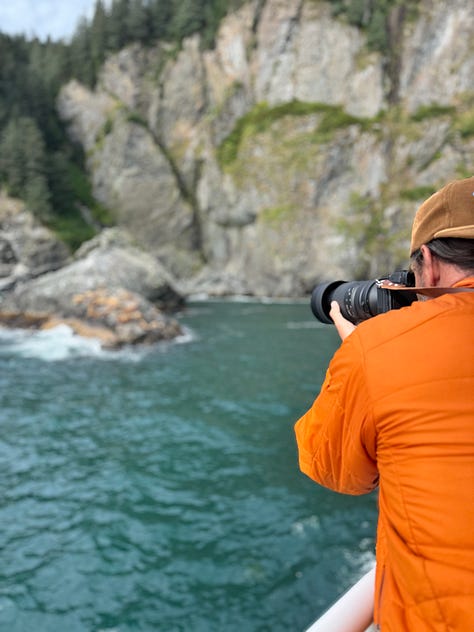
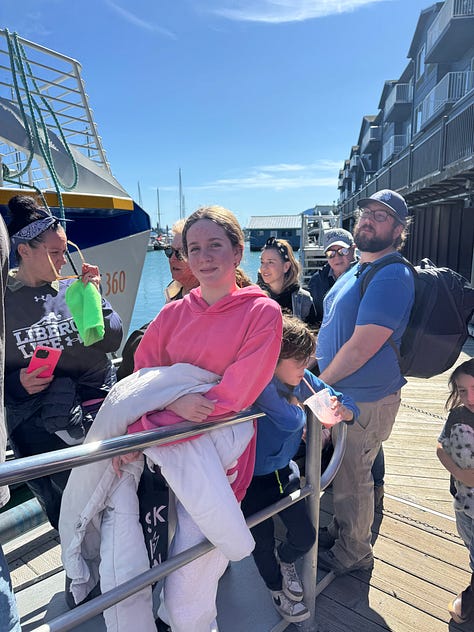
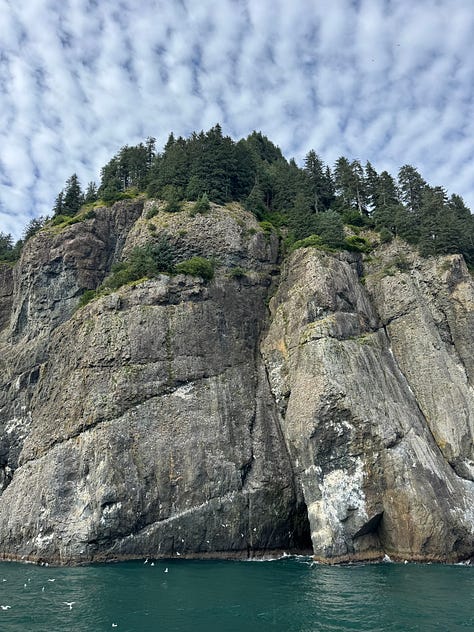
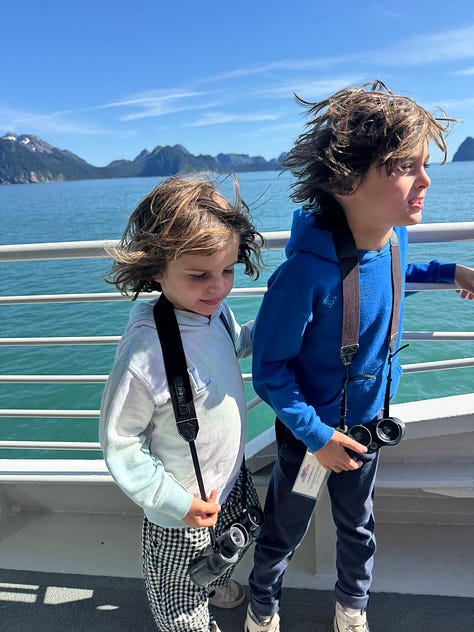
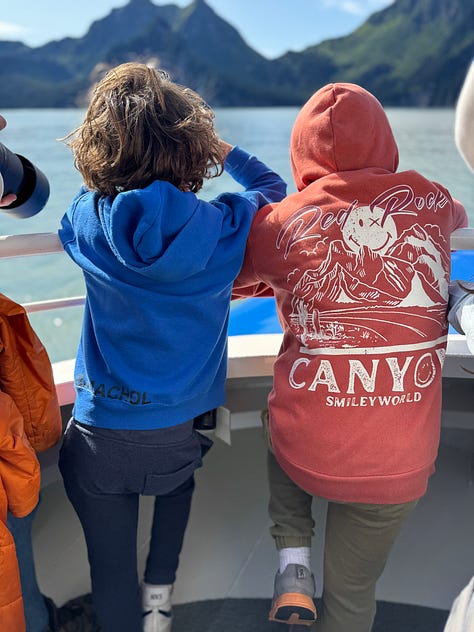
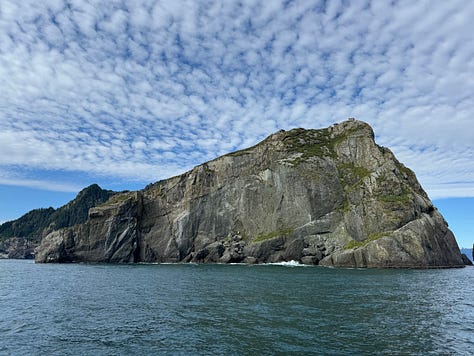
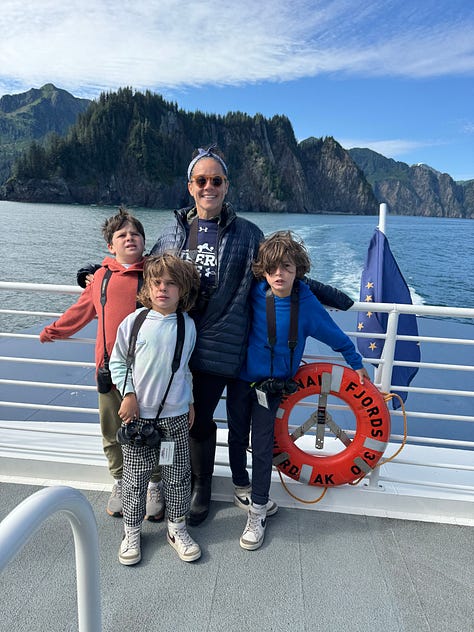
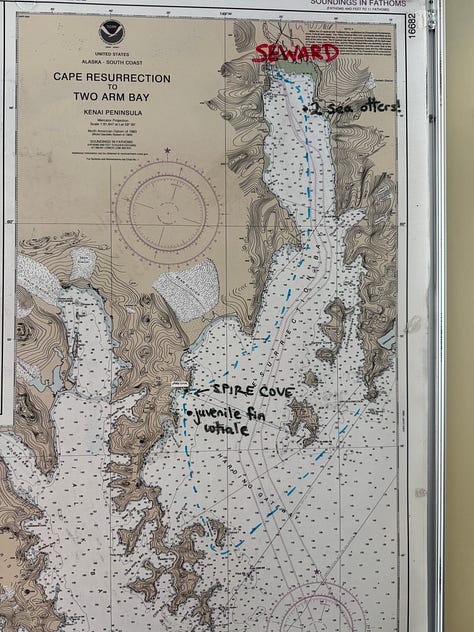
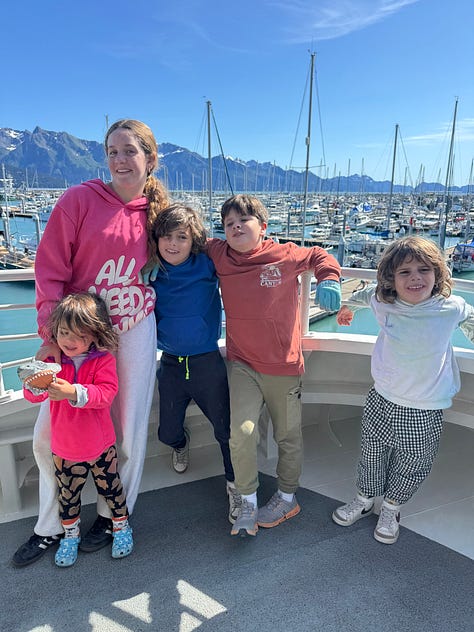




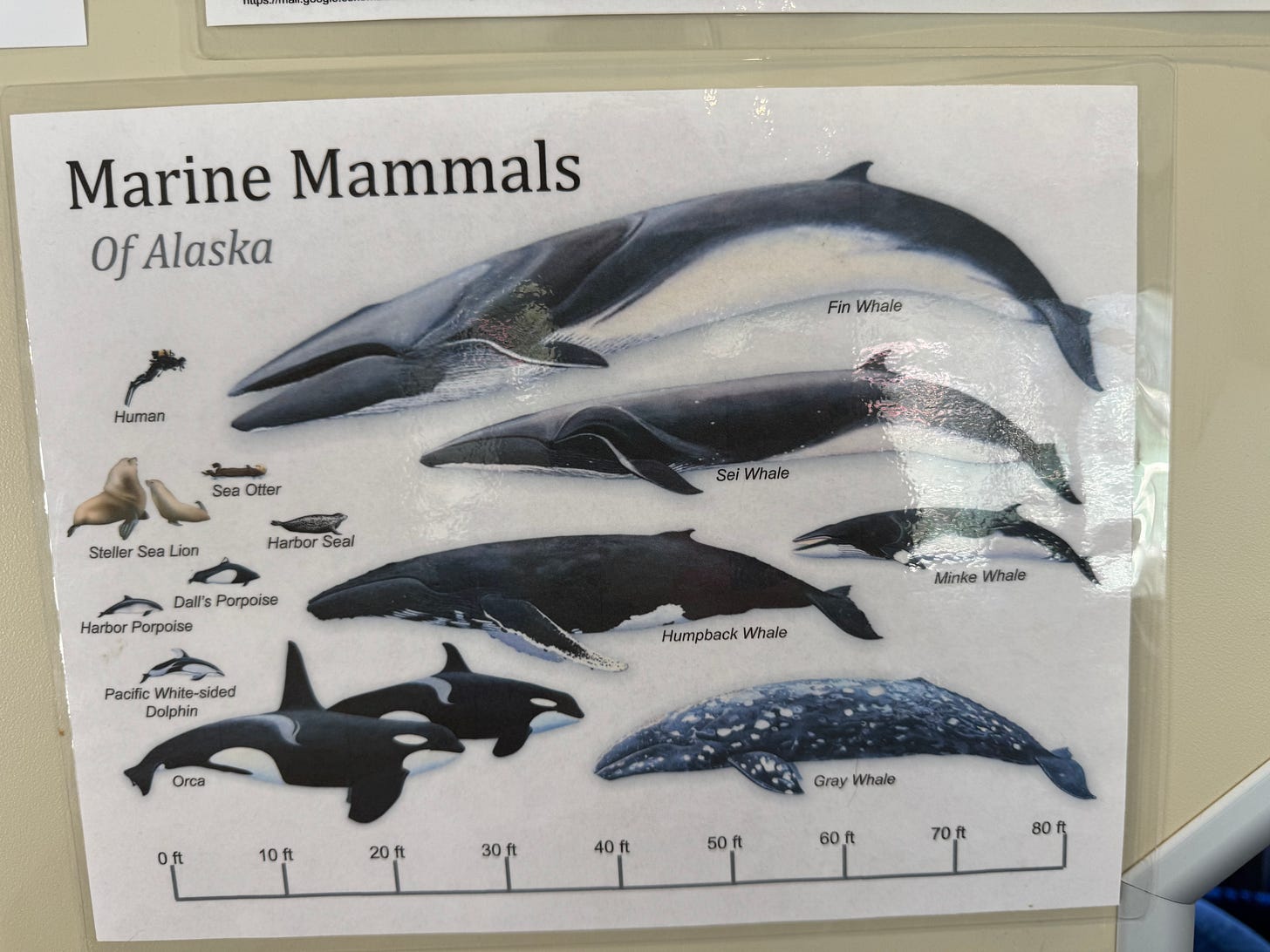
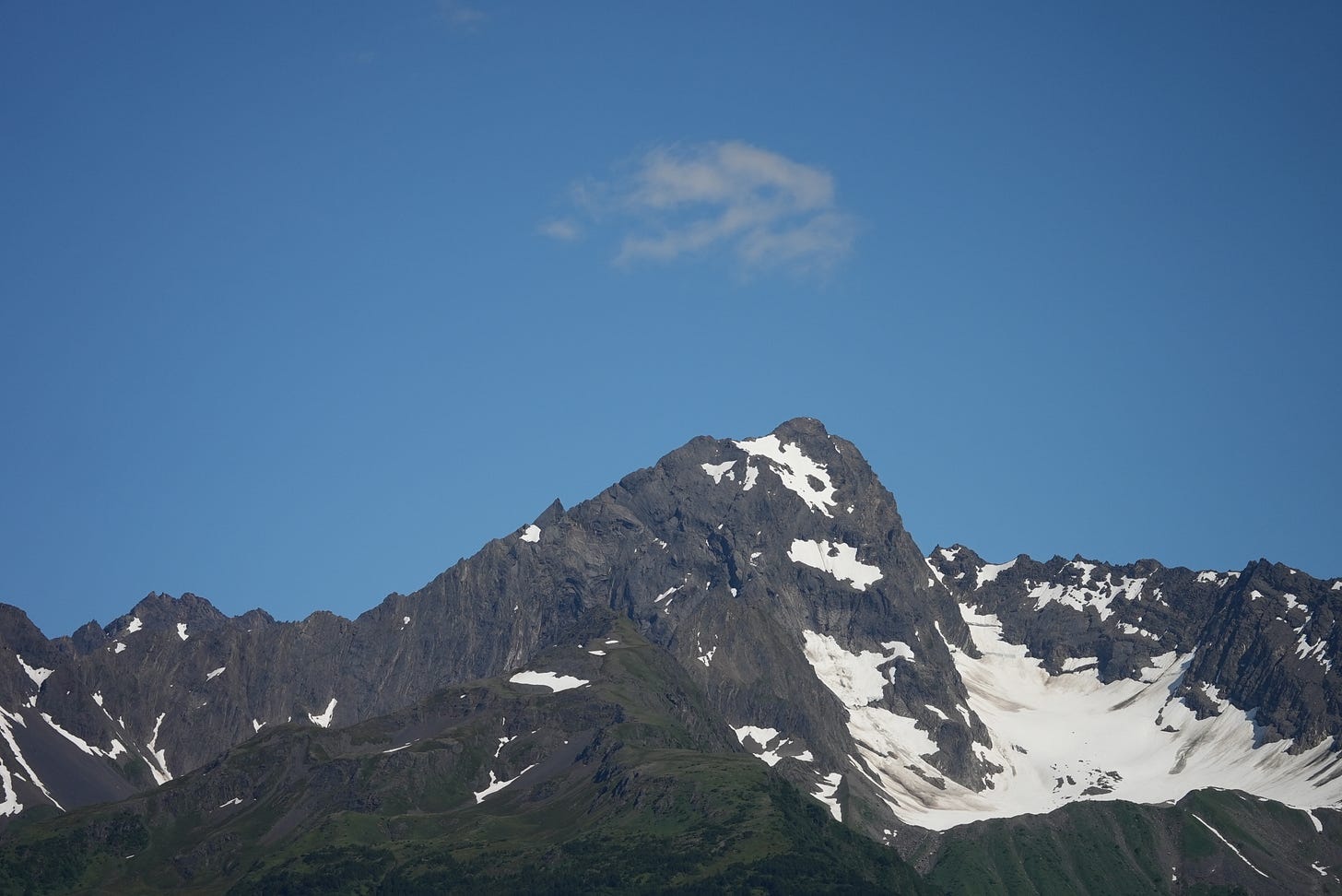
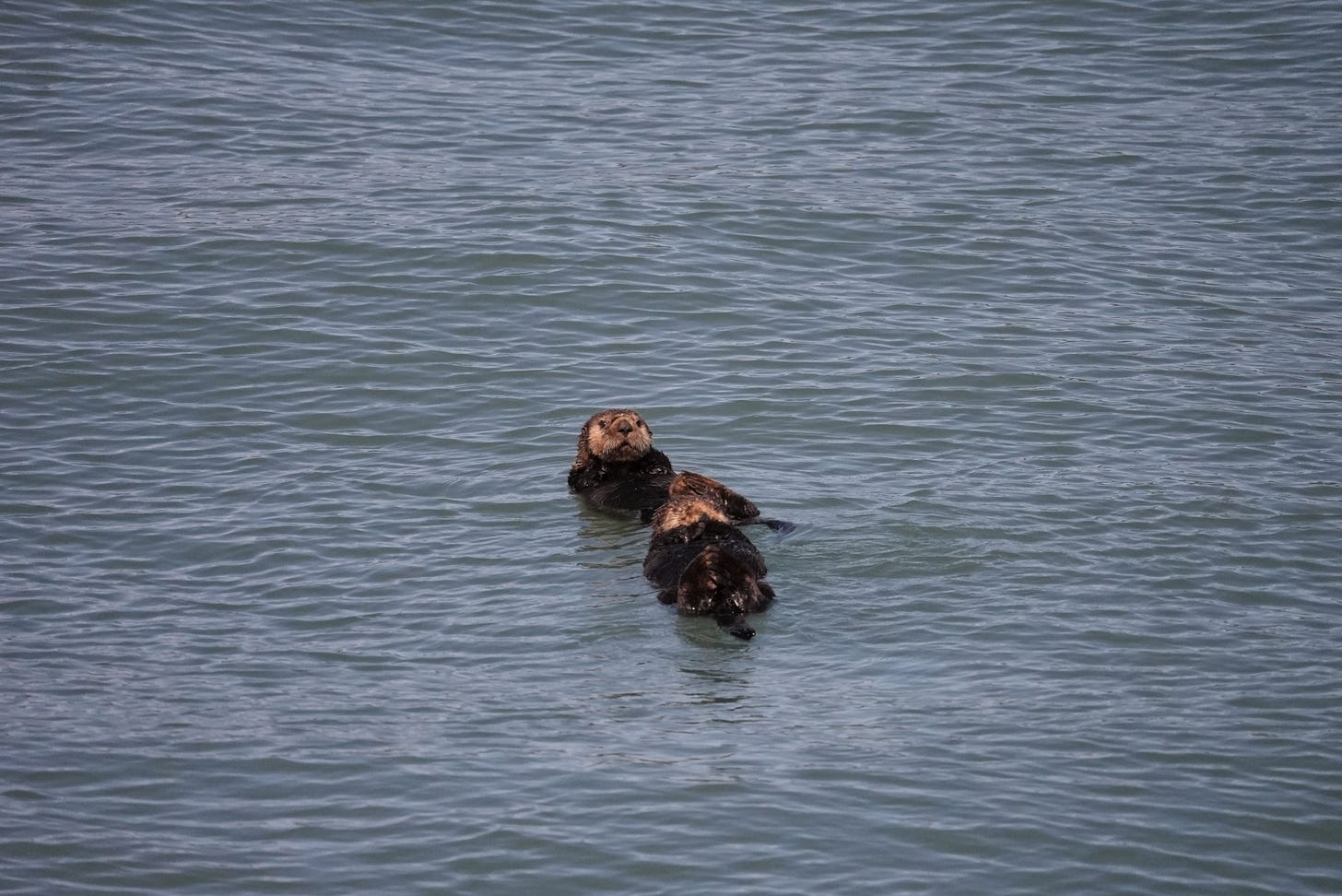
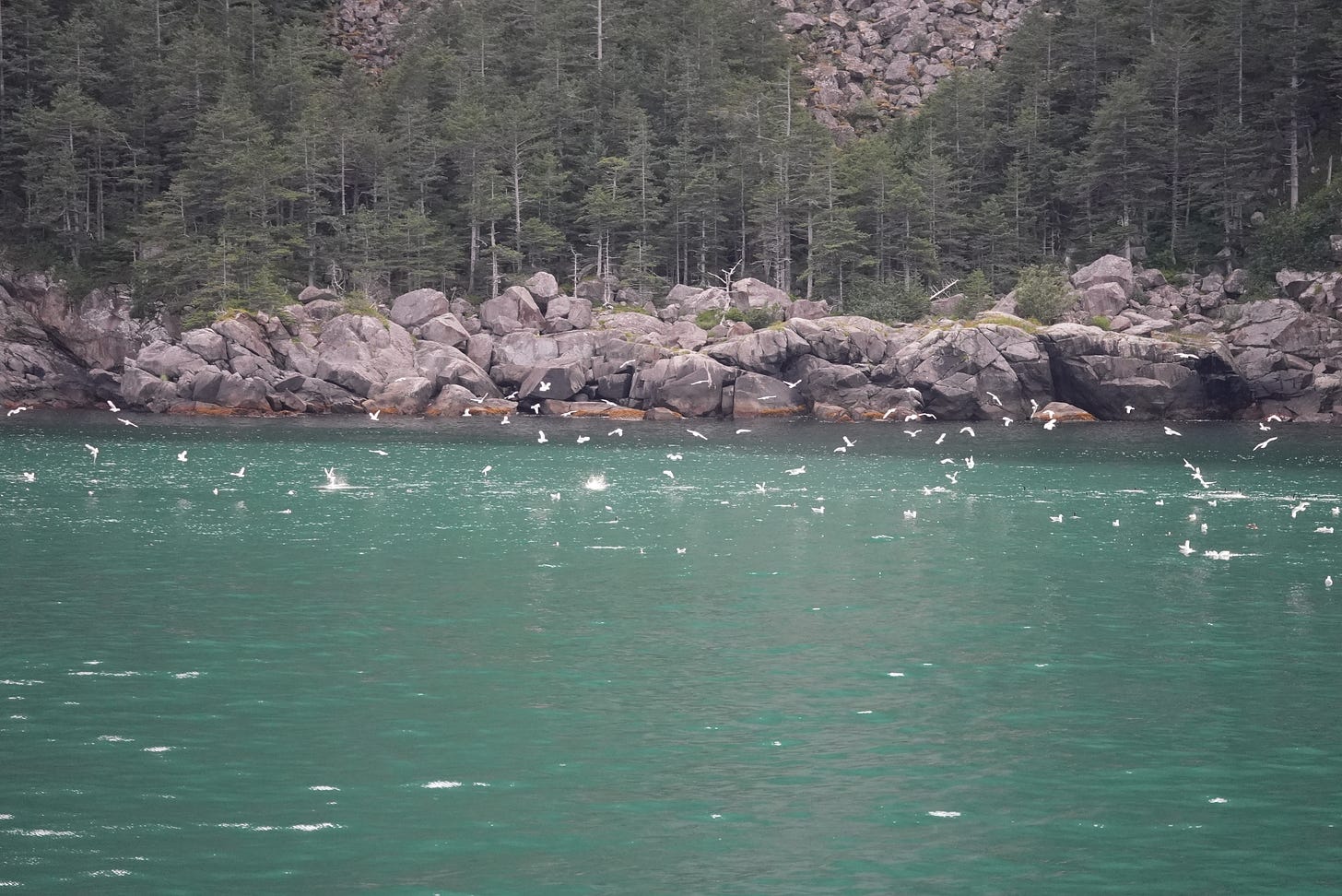
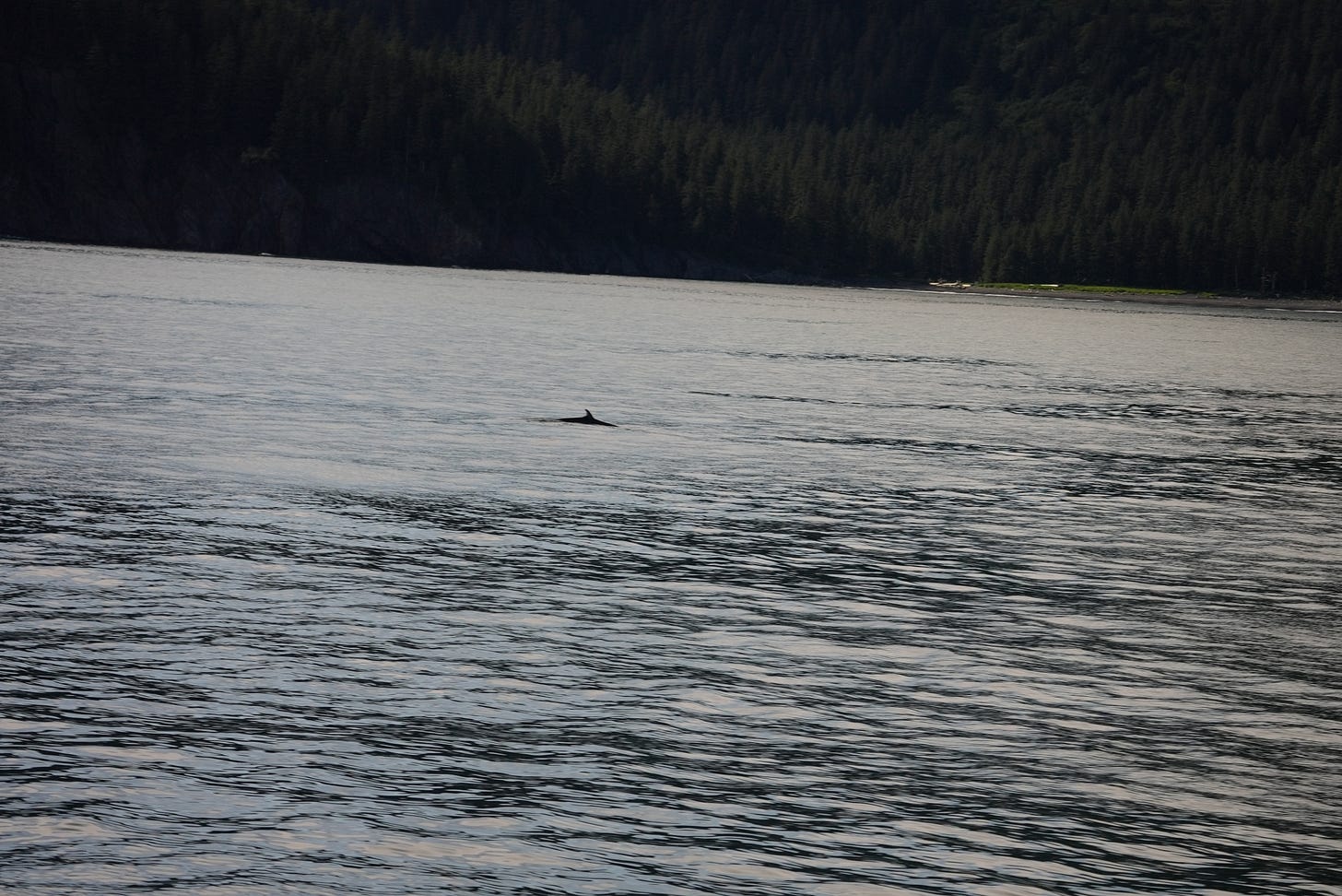
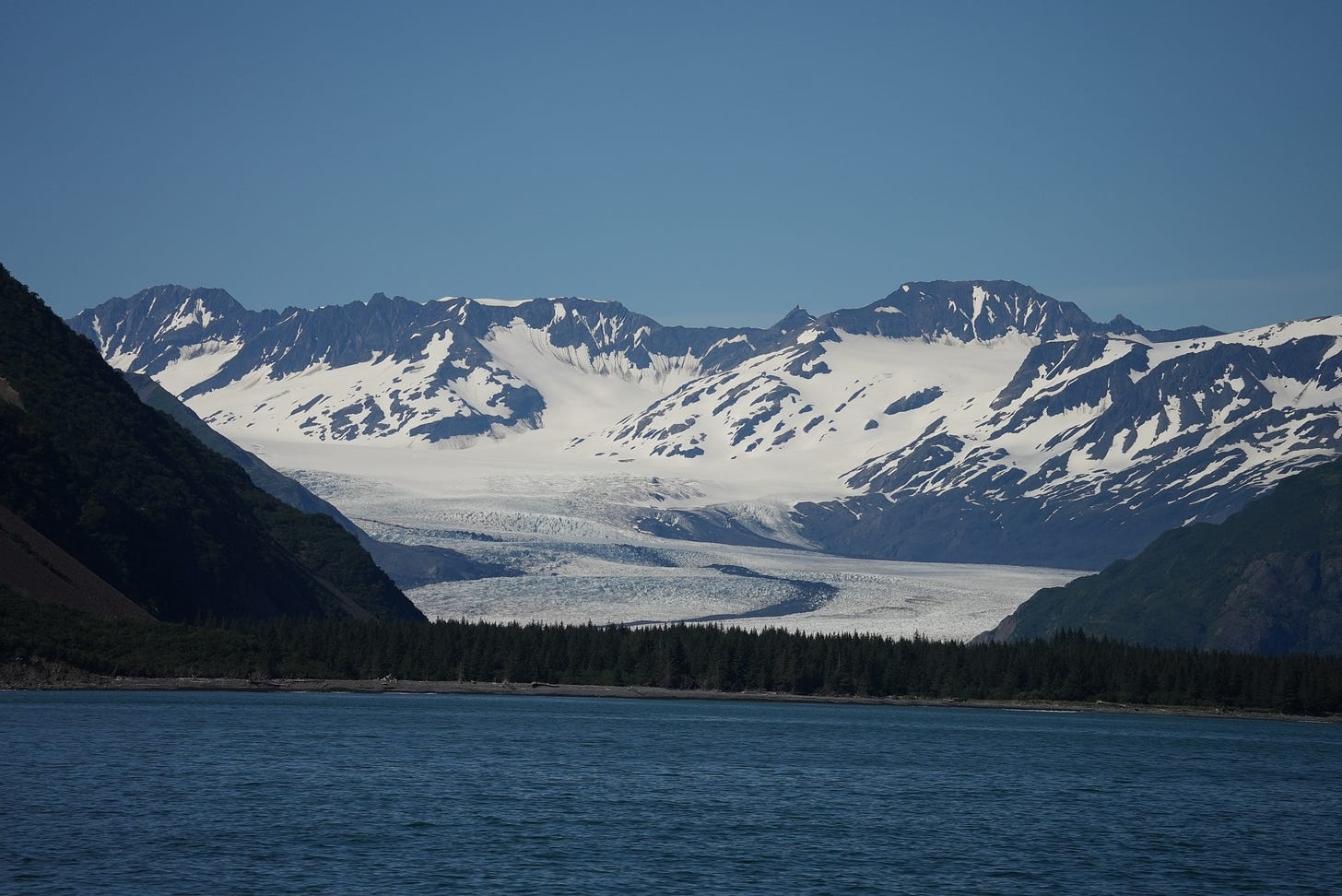
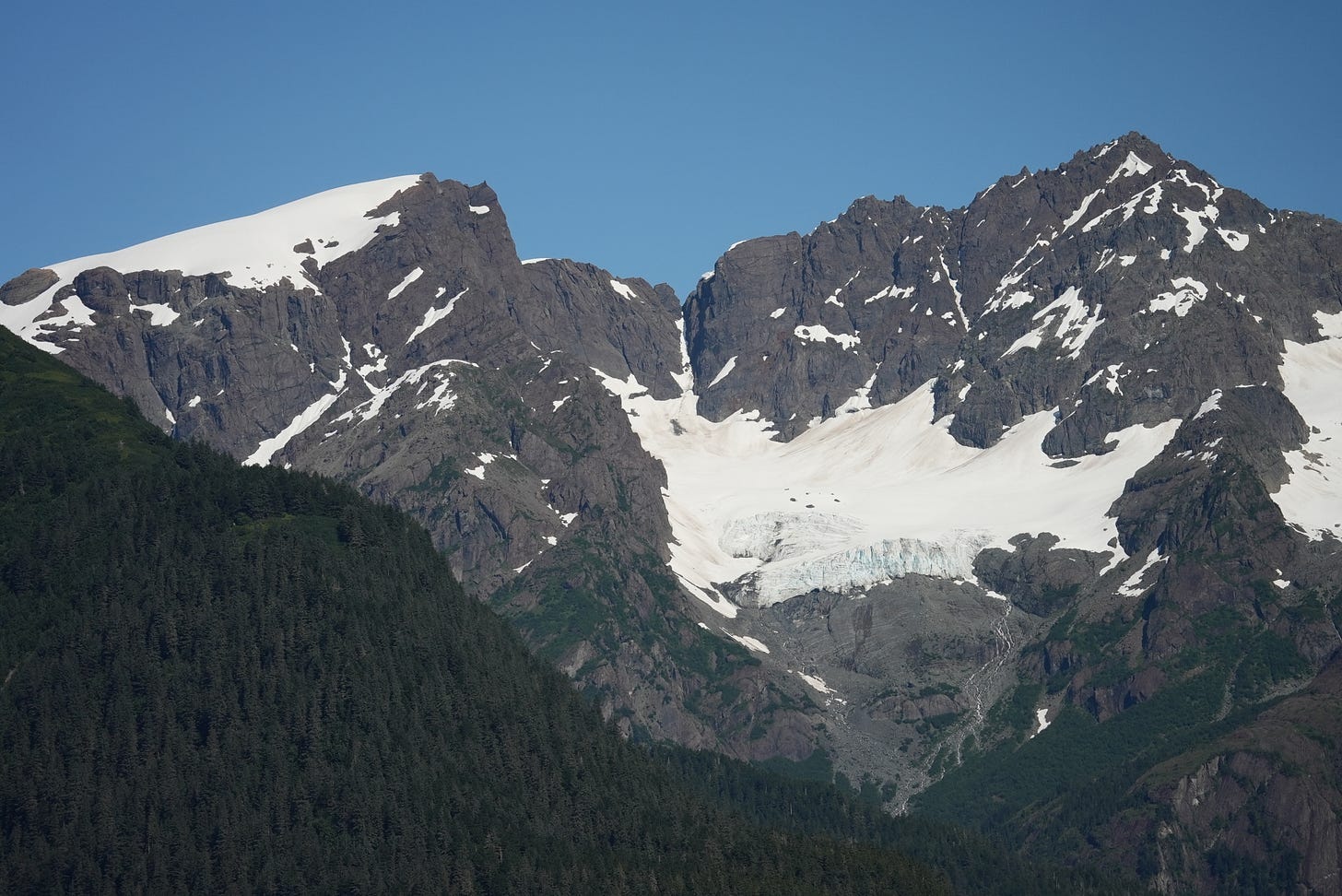
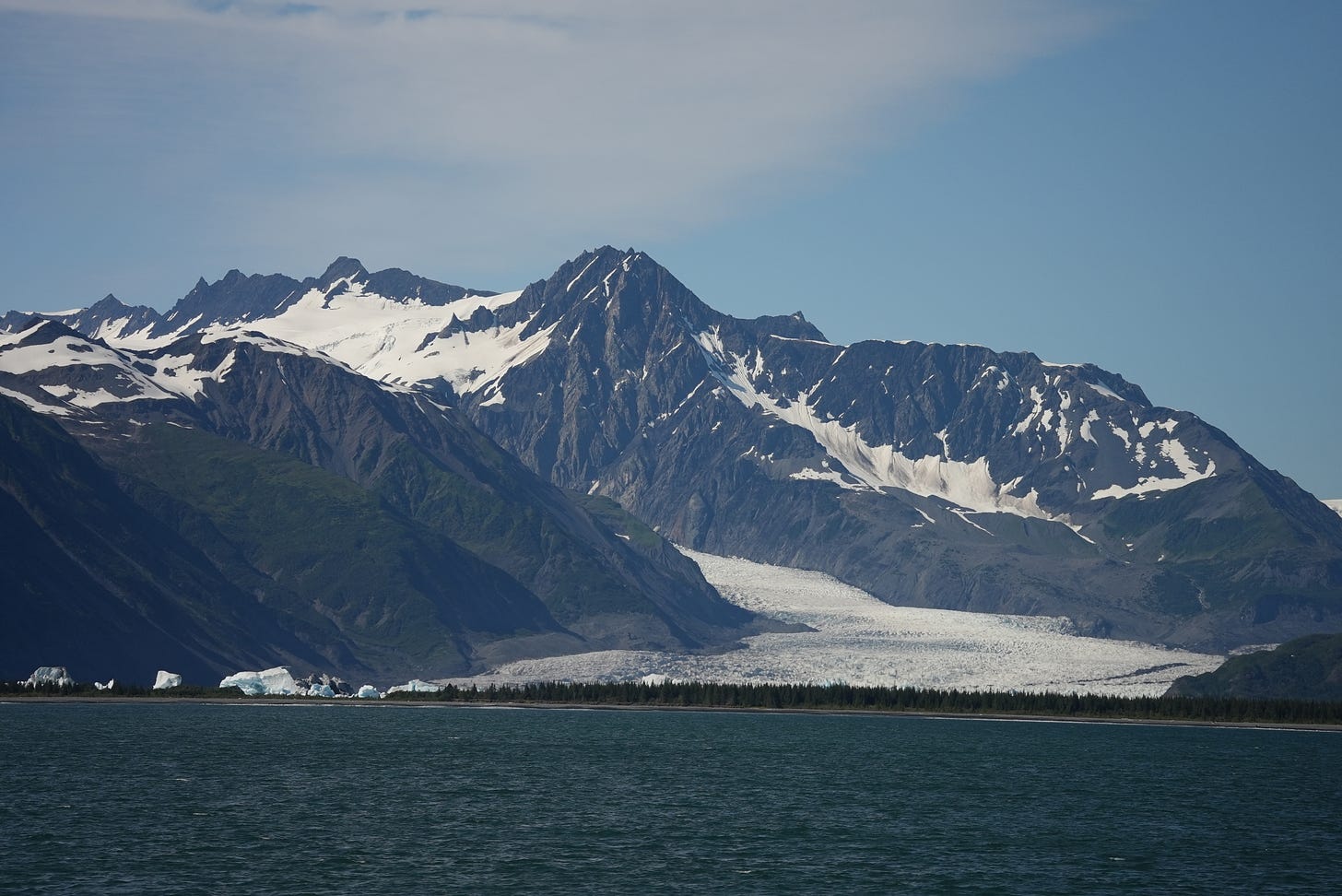
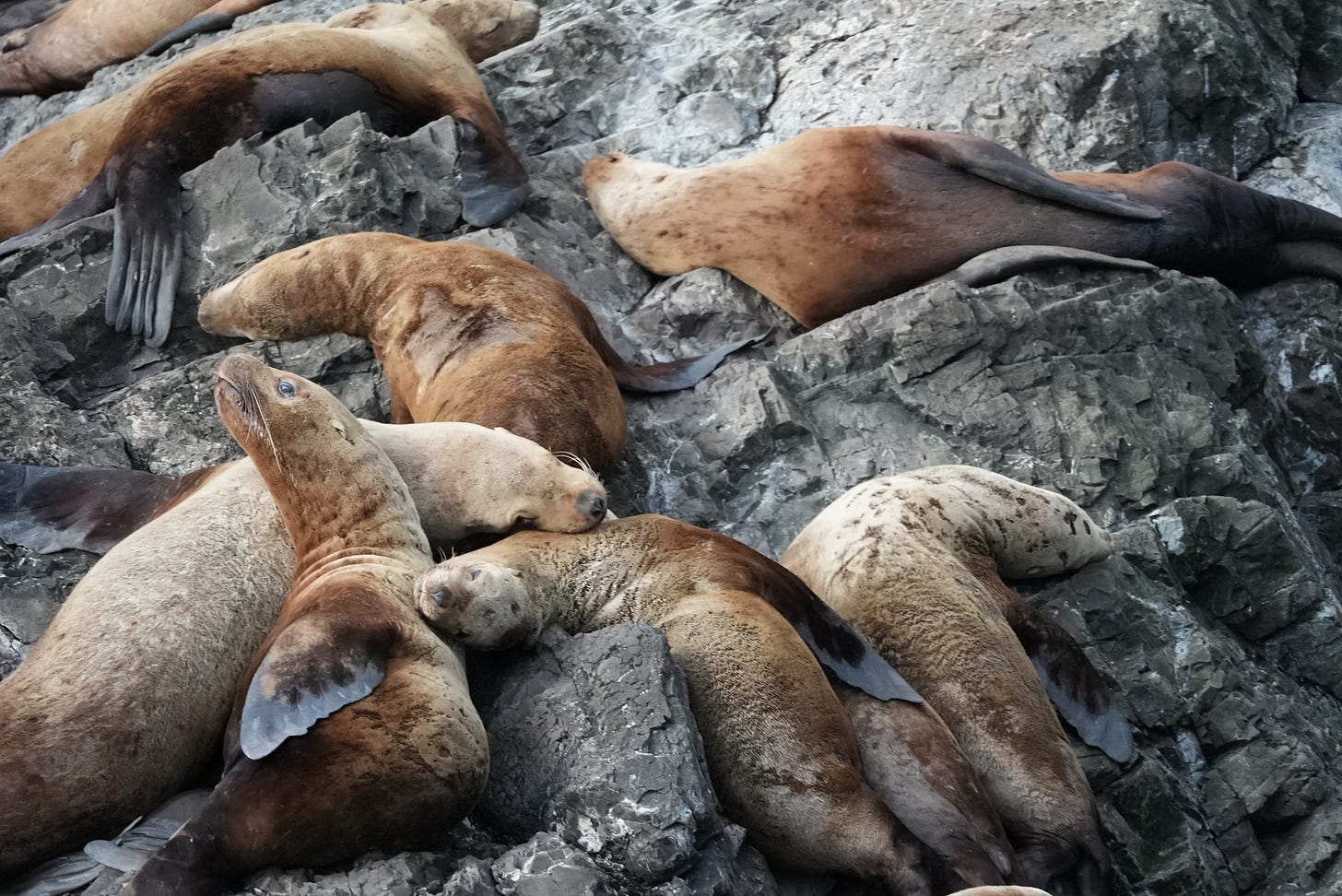

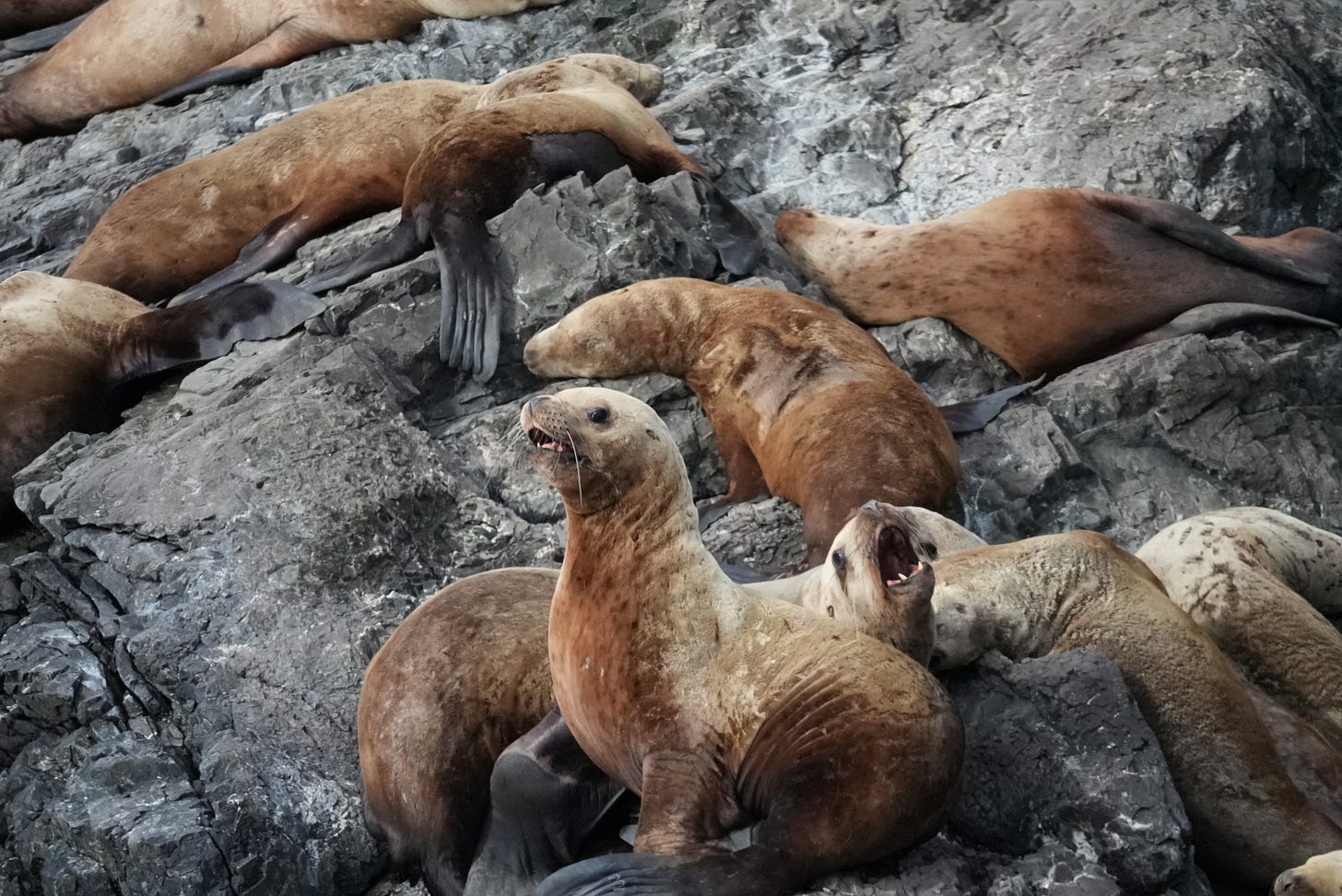
Beaches and turquoise waters have alway been my happy place, but these photos make me want to take an arctic cruise. Beautiful images and prose. Thank you for this mini escape.